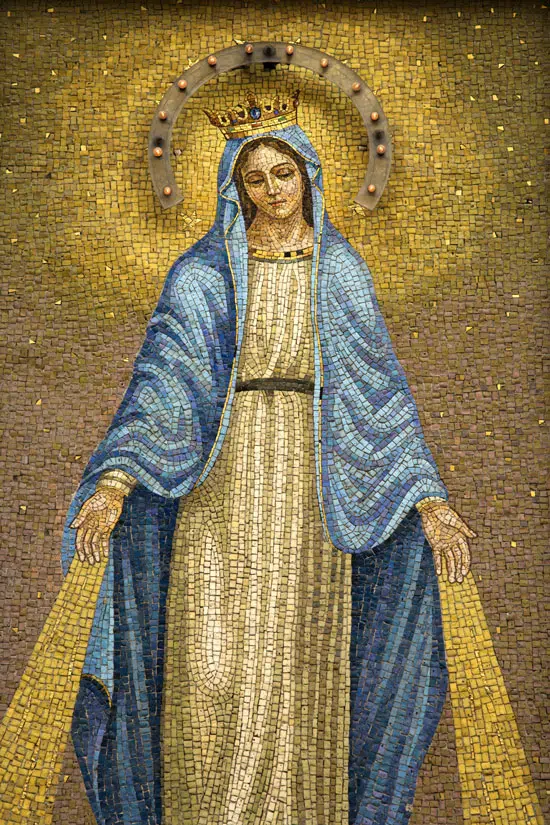The feast of the Queenship of Mary is celebrated Aug. 22. The role of the queen-mother has deep Biblical roots that may be best understood in light of the kingdom of God as it is anticipated in the Old Testament.
First, it is important to realize that, in the Gospels, Jesus reestablishes the Old Testament’s kingdom of David as the kingdom of God. Think of the words of the angel Gabriel to Mary concerning Jesus: “the Lord God will give him the throne of his father David, and he will reign over the house of Jacob forever” (Lk 1:37-38). Just as the Davidic kingdom was ruled by a descendant of David, Jesus is a descendant of David ruling over the kingdom of God.
Accounts of the Davidic kingdom frequently entailed a queen-mother, and so we can expect the kingdom of God also to have a queen-mother. The queen-mother usually ruled so long as her king-son reigned. Only two queen mothers extended their times in office beyond that of their sons, and the fact that these evil queens had to be deposed to be got rid of demonstrates the importance of the queen-mother’s office (see 1 Kg 15:13 and 2 Kg 11). In the case of Jesus, who rules eternally, the queenship of his mother lasts forever in the kingdom of God.
The most well-known account of a queen-mother is Bathsheba interceding for Solomon’s brother Adonijah and being highly honored by King Solomon (1 Kg 2). When Bathsheba approaches Solomon with a request from Adonijah, “the king rose to meet her, and bowed down to her; then he sat on his throne, and had a seat brought for the king’s mother; and she sat on his right.” Notice that King Solomon so honors his mother that he extends to her homage and a throne (the Hebrew words for “throne” and “seat” in the quotation are identical). He even puts himself at his mother’s disposal by saying to her, “Make your request, my mother, for I will not refuse you.” Now, as it turns out, Solomon does not grant her request but has Adonijah executed, but we don’t need to pretend that Solomon had no problems in order to argue that the position of queen-mother was an important one in the kingdom. Furthermore, this episode reveals that Mary’s queenship and her intercessory role are closely linked. Does it not remind us of Our Lady’s intercession for the married couple at Cana (Jn 2)?
We can imagine Mary seated as queen at the right hand of her king-son in heaven, yet they are not distant and impersonal monarchs. Christ identifies with the citizens of his kingdom so that their sufferings and consolations in life are also his (see Mt 25: 40, Acts 9: 4). Mary, who endured great personal suffering as well, is, in fact, identified with all Christians in Revelation 12, where she is described as a queen — having “on her head a crown of twelve stars”— but also as a symbol of the church persecuted by Satan later in the chapter.
Amid the sufferings of our time, what a consolation it is to belong to the otherworldly kingdom ruled eternally by our divine king with his mother reigning forever by his side. And, from her position at the right hand of the king, she intercedes for us. Yet even apart from her intercession, she deserves our honor, since the king himself honors her (without compromising the worship due to himself of course). And what a comfort that our king, so great yet so near to us, has given us so great and near a queen to be our “most gracious advocate.”
Montanaro is assistant professor of sacred Scripture at Christendom Graduate School of Theology in Alexandria.



Learn from the risen Lord